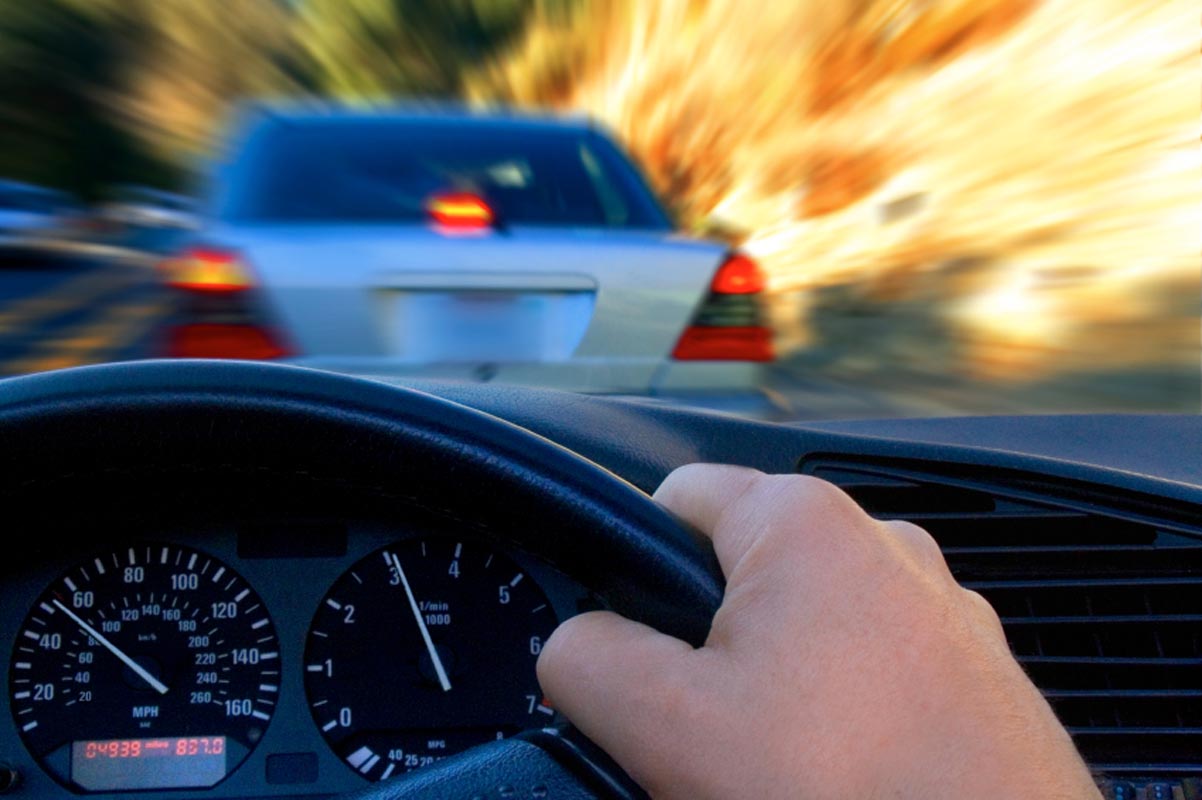

Stringent distracted driving laws have been put into place to help manage and reduce accidents, especially targeting teen drivers. Using cell phones while driving is a major cause of traffic crashes, which have caused thousands of injuries and many deaths. The loss of life due to distracted driving stood at 3,166, an incredible 8.6% of all fatalities reported in 2017.
The figures may be higher as many cases of death due to careless or distracted driving go unreported. The figures also point a finger of blame on teenagers aged 16 to 19 who were involved in nearly 58% of the crashes reported by the AAA Foundation for a traffic study. The research also reported that being distracted by an electronic device inside or outside the car, accounts for more than 50% of vehicle crashes involving young people behind the wheel.
The detailed study conducted by the NHTSA was tasked with finding a solution to manage the distracted driving problem in America. The study chose Hartford, Connecticut, and Syracuse, New York, for a detailed “Distracted Driving Demonstration programs” which tested if High-Visibility Enforcement (HVE) programs reduced the use of cell phones by drivers while operating vehicles. It involved the transportation departments of both the states and also state and local law enforcement offices. The HVE efforts by the agencies were carried out in four stages over a year, which also involved extensive media campaigns in the chosen areas.
The research utilized data about reported cell phone use while driving before and after the conclusion of the program period. The results were encouraging with a substantial reduction of cell phone use while driving in the areas of program and study. The media message was clear and very effective in the program areas, with the slogan “Phone in One hand, Ticket in the Other.”
The above study and the spike in crashes and deaths lead to the implementation of strict distracted driving laws currently effective in 21 states, and the territories of Puerto Rico, Guam, the US Virgin Islands and Washington, District of Columbia. All the aforementioned areas now have laws that ban the use of cellular phones or any other digital communication device while driving.
Law enforcement officers have been given the authority to issue tickets to such offenders, even if the drivers are not breaking any other traffic rules. Additionally, 20 states have categorically banned school bus drivers from using a cell phone or any hand-held electronic device while driving. Over and above the laws drafted by the state governments, many cities and towns have enacted their own strict distracted driving laws especially targeted at drivers using electronic devices while driving.
Laws Regarding Texting While Driving
The law banning texting while driving has been enforced in 48 states and the territories of Guam, Puerto Rico, the US Virgin Islands, and Washington, District of Columbia. Law enforcement officers, as with the cellphone ban, can issue tickets to drivers for texting while driving even if they have not committed any other traffic-related offense as referenced above.
All the states have included a category in the law enforcement reporting forms and they all follow the Model Minimum Uniform Crash Criteria (MMUCC) guidelines to collect distracted driving data.
Distracted Driving laws targeting Novice drivers
Thirty-nine states and the District of Columbia have adopted the Graduated Driver Licensing or the GDL provisions with restrictions to tackle distracted driving for novice drivers, especially teens with a new license. Additional limitations on passengers in regard to distracted driving have been put in place in l46 states and the District of Columbia.
The various laws for the prevention of cell phone use have shown mixed results. The variations in law of the states do not take into account the other traffic offenses committed by drivers using their cell phones to call or text while driving. The distracted driver other than being involved in fatal crashes also tends to ignore speed limits.
Teens and Distracted Driving Laws
Strong laws have not been very effective in preventing crashes and fatalities involving teens and new drivers. To avoid all the negative outcomes of distracted driving, programs like High-Visibility Enforcement (HVE) involving local authorities and the media with the use of other Crash Avoidance Technologies may be more effective than simply just the implementation of distracted driving laws.
Car Accident Prevention Program targeted at Teens
Car and vehicle accident prevention programs aim to help teens gain the skills and knowledge to stay safe on the road. The prevention program especially educated on the negative effects of cellphone use for talking and texting while driving. Since the figures show that teen drivers from ages 16 to 19 account for almost four times the fatal crashes than experienced adult drivers.
Car accident prevention centers on the three chief errors a novice teen driver makes while driving:
- Distraction, mainly by the use of an electronic device while driving.
- Inability to detect and avoid hazards on the road.
- Fast driving.
The good news is that the researchers at Children’s’ Hospital of Philadelphia have come up with a TeenDrivingPlan Practice guide for novice drivers to follow that provides the quality and quantity of driving practice needed to safely drive on the roads.
Distracted driving laws are similar for most states, the District of Columbia, and overseas territories with some exceptions, provided by AAA:
ALABAMA: Use of all handheld and hands-free communication devices is banned while driving which includes the use of cell phones. Texting while driving is a serious offense
ARIZONA: Use of all handheld and hands-free communication devices is banned while driving which includes the use of cell phones by school bus drivers. Additionally, texting while driving is a serious offense in the cities of Tucson, Phoenix, and Flagstaff.
ARKANSAS: Use of all handheld and hands-free communication devices is banned while driving which includes the use of cell phones by bus drivers and novice drivers. Additionally, drivers are banned from using cell phones or any other handheld communication device while driving through the road work zone and school zone
CALIFORNIA: A total ban on the use of all handheld and hands-free communication devices while driving which includes the use of cell phones for all drivers which include drivers under the age of 18 and bus drivers. Texting while driving is a serious offense.
CONNECTICUT: Use of all handheld and hands-free communication devices are banned while driving which includes the use of cell phones by all drivers including bus drivers and drivers under the age of 18. Additionally, the state has very stringent distracted driving laws to prosecute errant drivers for any action which could interfere with the operation of their motor vehicle.
DELAWARE: Use of all handheld and hands-free communication devices is banned while driving which includes the use of cell phones by all drivers including bus drivers.
Additionally, the use of cell phones while driving is banned for drivers holding a learner’s permit or intermediate license. Texting while driving is a serious offense.
GEORGIA: Use of all handheld and hands-free communication devices is banned while driving which includes the use of cell phones by drivers under the age of 18 with an instruction permit or Class D license
IDAHO: Texting is a serious offense The state has additional law that attributes the “Distraction in/out vehicle” list.
ILLINOIS: Use of all handheld and hands-free communication devices is banned while driving which includes the use of cell phones by all drivers including bus drivers. Texting is a serious offense
INDIANA: Use of all handheld and hands-free communication devices are banned while driving which includes the use of cell phones by drivers under the age of 18.
KANSAS: Use of all handheld and hands-free communication devices are banned while driving which includes the use of cell phones by drivers who hold an instruction permit or restricted Class C or Class M license.
LOUISIANA: Use of all handheld and hands-free communication devices are banned while driving which includes the use of cell phones by drivers under the age of 17.
MISSISSIPPI: Use of all handheld and hands-free devices is banned while driving which includes the use of cell phones by drivers holding a learner permit or temporary driving license and for school drivers transporting minors
NEBRASKA: Use of all handheld and hands-free devices is banned while driving which includes the use of cell phones by drivers by drivers under the age of 18 who hold learners license including LPE, SCP, LPD, and POP licenses
OKLAHOMA: Use of all handheld and hands-free devices is banned while driving which includes the use of cell phones by drivers holding a learner’s permit or temporary driving license and for school drivers transporting minors. Additionally, errant drivers can be ticketed if the police officer finds the driver is distracted by any other reason
TENNESSEE: Use of all handheld and hands-free devices is banned while driving which includes the use of cell phones by drivers holding a learner’s permit or temporary driving license. The use of cell phones is allowed in case of an emergency.
The trial attorneys at Van Riper and Nies Attorneys, an Army Ranger Veteran-owned injury law firm, have successfully represented injured clients in Broward, Palm Beach, Martin County, and St. Lucie counties. This article is not a substitute for legal advice. For more information about Personal Injury, Motorcycle Accident, and Automobile Accident Practice groups contact us day or night.
Stuart FL Accident Law Firm: 772-283-8712
West Palm Beach FL Accident Law Firm: 561-948-5588
Delray Beach FL Accident Law Firm: 561-894-9862
Boca Raton FL Auto Accident Law Firm: 561-948-5589
Deerfield Beach FL Accident Law Firm: 954-369-0776